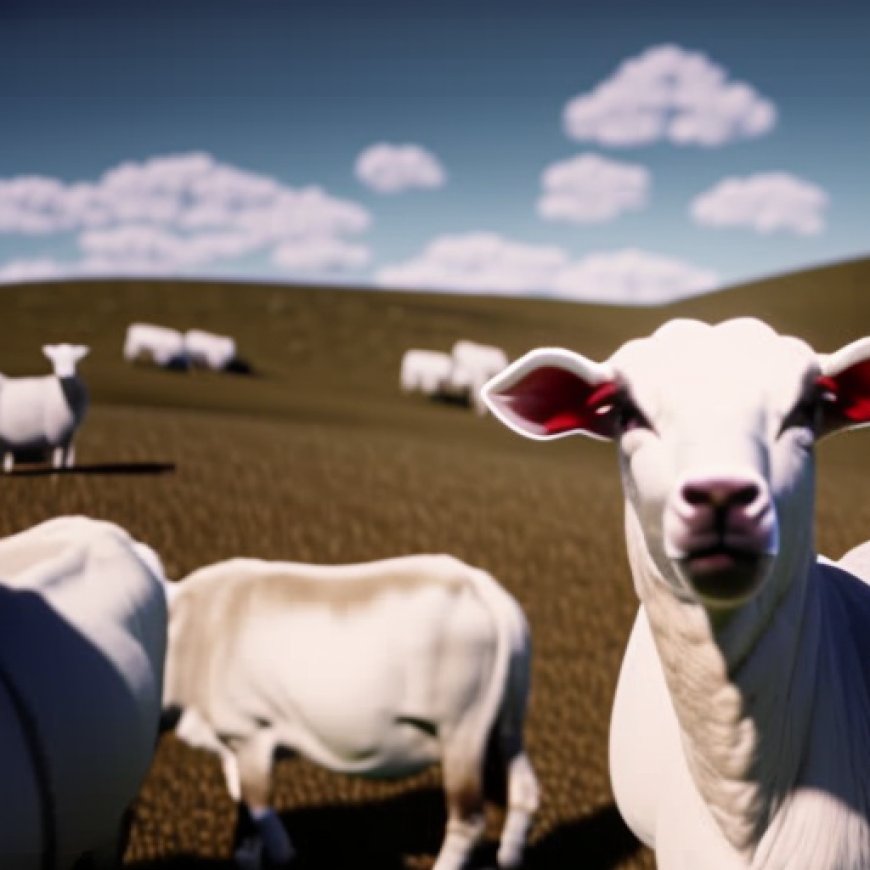How can we use nutritional strategies to mitigate methane emissions from ruminants?
How can we use nutritional strategies to mitigate methane emissions ... EurekAlert


Mitigating Methane Emissions in Livestock Production: A Review of Nutritional Strategies
Introduction
Methane concentrations in the atmosphere have doubled compared to preindustrial levels, with animal production contributing to 14.5% of global greenhouse gas (GHG) emissions. Of these emissions, 37% come from methane (CH4) produced by livestock. Decreasing CH4 emissions from ruminants is crucial for controlling GHG in the livestock production system. Various nutritional strategies have been investigated to decrease methanogenesis, but their effectiveness and potential vary under different conditions. It is important to develop suitable strategies that do not compromise animal production and food safety.
Research Overview
In a recent study, Associate Professor Mengmeng Li and Professor Guangyong Zhao from China Agricultural University systematically described the mechanisms of CH4 production and reviewed nutritional strategies to mitigate CH4 emissions. The study evaluated the effectiveness, application prescription, and feed safety of each mitigation strategy based on in vitro and in vivo studies. The researchers also proposed comprehensive approaches for future feeding interventions and applications in the livestock industry.
Methane Production Pathways
The study highlighted that the composition and proportion of methanogens significantly impact CH4 production. Four main CH4 production pathways were identified: hydrogenotrophic, acetoclastic, methyl dismutation, and methyl-reducing pathways. These pathways utilize the decomposition of low carbon organics and require minerals as cofactors. Hydrogen is a key component in most methanogenesis pathways, with dissolved hydrogen being the primary source.
Nutritional Strategies to Mitigate CH4 Production
The study explored various nutritional strategies to mitigate CH4 emissions in ruminants. Changing dietary nutrient compositions, such as non-fiber carbohydrate (NFC) and neutral detergent fiber (NDF), has proven effective in decreasing methanogen abundance and CH4 emissions. Methanogen inhibitors, such as polyhalogen compounds and plant secondary metabolites like tannins and gallic acid, have also shown promise in selectively inhibiting CH4-related bacteria. However, it is important to consider the potential impacts on microbial adaptation, chemical residues, and the spread of antibiotic-resistant genes and microbes.
Recommendations and Conclusion
The study suggests that using nutritional strategies to regulate CH4 emissions is increasingly possible. Optimizing nutrient supply to animals based on their requirements can contribute to decreased CH4 emissions and more efficient animal production. However, it is crucial to evaluate mitigation practices in an integrated animal production system to consider animal production efficiency, rumen environmental health, and economic benefits. Further research is needed to bridge the gap between in vitro and in vivo studies and to explore the potential of chemical materials in animal studies. The study recommends dietary supplementation with specific compounds and the combined use of probiotics and appropriate supplements to decrease CH4 emissions. Continuous technological innovations are also necessary to address the diverse livestock production systems.
Publication Information
This study has been published in the Journal of Frontiers of Agricultural Science and Engineering (2023, 10(3)). DOI: 10.15302/J-FASE-2023504
Disclaimer
AAAS and EurekAlert! are not responsible for the accuracy of news releases posted to EurekAlert! by contributing institutions or for the use of any information through the EurekAlert system.
SDGs, Targets, and Indicators
1. Which SDGs are addressed or connected to the issues highlighted in the article?
- SDG 13: Climate Action
- SDG 2: Zero Hunger
- SDG 12: Responsible Consumption and Production
2. What specific targets under those SDGs can be identified based on the article’s content?
- SDG 13.2: Integrate climate change measures into national policies, strategies, and planning.
- SDG 2.4: By 2030, ensure sustainable food production systems and implement resilient agricultural practices that increase productivity and production.
- SDG 12.4: By 2020, achieve the environmentally sound management of chemicals and all wastes throughout their life cycle, in accordance with agreed international frameworks, and significantly reduce their release to air, water, and soil to minimize their adverse impacts on human health and the environment.
3. Are there any indicators mentioned or implied in the article that can be used to measure progress towards the identified targets?
- Indicator for SDG 13.2: Integration of climate change measures into national policies, strategies, and planning.
- Indicator for SDG 2.4: Adoption of sustainable agricultural practices and increase in productivity.
- Indicator for SDG 12.4: Reduction in the release of methane emissions from livestock production.
Table: SDGs, Targets, and Indicators
| SDGs | Targets | Indicators |
|---|---|---|
| SDG 13: Climate Action | Target 13.2: Integrate climate change measures into national policies, strategies, and planning. | Indicator: Integration of climate change measures into national policies, strategies, and planning. |
| SDG 2: Zero Hunger | Target 2.4: By 2030, ensure sustainable food production systems and implement resilient agricultural practices that increase productivity and production. | Indicator: Adoption of sustainable agricultural practices and increase in productivity. |
| SDG 12: Responsible Consumption and Production | Target 12.4: By 2020, achieve the environmentally sound management of chemicals and all wastes throughout their life cycle, in accordance with agreed international frameworks, and significantly reduce their release to air, water, and soil to minimize their adverse impacts on human health and the environment. | Indicator: Reduction in the release of methane emissions from livestock production. |
Behold! This splendid article springs forth from the wellspring of knowledge, shaped by a wondrous proprietary AI technology that delved into a vast ocean of data, illuminating the path towards the Sustainable Development Goals. Remember that all rights are reserved by SDG Investors LLC, empowering us to champion progress together.
Source: eurekalert.org

Join us, as fellow seekers of change, on a transformative journey at https://sdgtalks.ai/welcome, where you can become a member and actively contribute to shaping a brighter future.







